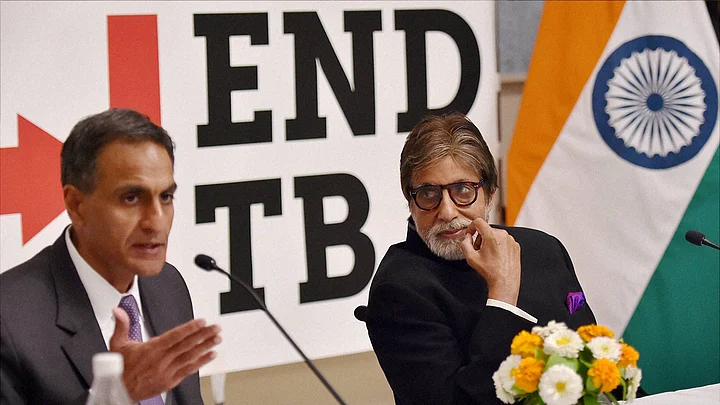A new study has found that India could witness an alarming spike in cases of drug-resistant tuberculosis (TB) in the next two decades, which would slow down the government’s plan to eradicate the disease by 2025.
According to the study published in the medical journal Lancet, drug-resistant TB could make up one in ten cases of the disease in the country by 2040.
A similar surge has been forecast for Philippines, Russia and South Africa too.
“By 2040, a third of tuberculosis cases in Russia are predicted to be drug-resistant, compared with one in ten in India and the Philippines, and one in 20 in South Africa,” the study said.
This compares to almost a quarter of cases (24.8 percent) in Russia, 7.9 percent in India, 6 percent in the Philippines, and 2.5 percent in South Africa in 2000, the study said.
Tuberculosis is a bacterial disease that can be treated with a combination of antibiotic drugs.
However, the “use and misuse” of antibiotics – such as using the wrong drug or not completing the full course of treatment – may result in bacteria developing drug resistance, known as acquired drug resistance.
The study said the upturn is likely because of increased transmission of drug-resistant tuberculosis between people, rather than by strains acquiring resistance to drugs.
Eradication Measures Need to be Multi-pronged
While better access to treatment programmes will reduce rates of drug-resistant TB in the aforementioned countries, this alone will not eradicate the disease as current efforts may not be enough to reverse the spike.
The study also called for research into additional control measures to prevent the spread of the drug-resistant disease.
These measures include early detection, reducing the number of patients who do not complete treatment and providing tailored treatment depending on which drugs the strain is susceptible to.
The government’s proposed eradication plan had stated it would need more than Rs 16,000 crore to be implemented.
However, media reports have said that in the final proposal sent to Prime Minister Modi, the budget was cut down to Rs 12,000 crore. This reduction in funds may affect rolling out of many new activities which the plan lays out.
We cannot focus solely on curing people with TB or drug-resistant TB if we want to halt the epidemic. Even if we prevent new drug-resistant infections, there are enough current cases to keep the epidemic going. Drug-resistant TB will continue to be an increasingly dangerous threat so long as resistant strains spread through the air from one person to another.Aditya Sharma, US Centers for Disease Control and Prevention
He said there is a need to dramatically step up efforts to break the cycle of transmission, while also maintaining efforts to rapidly find and treat all people with tuberculosis.
We must strengthen infection control measures, focus on households, health centres, and communities to prevent tuberculosis spreading from person to person, and develop more effective diagnostic tests to rapidly and accurately detect drug resistance.
Latest figures estimate that each year there are 10.4 million new cases of tuberculosis, leading to 1.8 million deaths globally.
Nearly 40 percent of all drug-resistant TB cases occur in Russia, India, the Philippines, and South Africa – accounting for more than 2,30,000 cases in 2015.
(With inputs from Lancet and PTI.)

